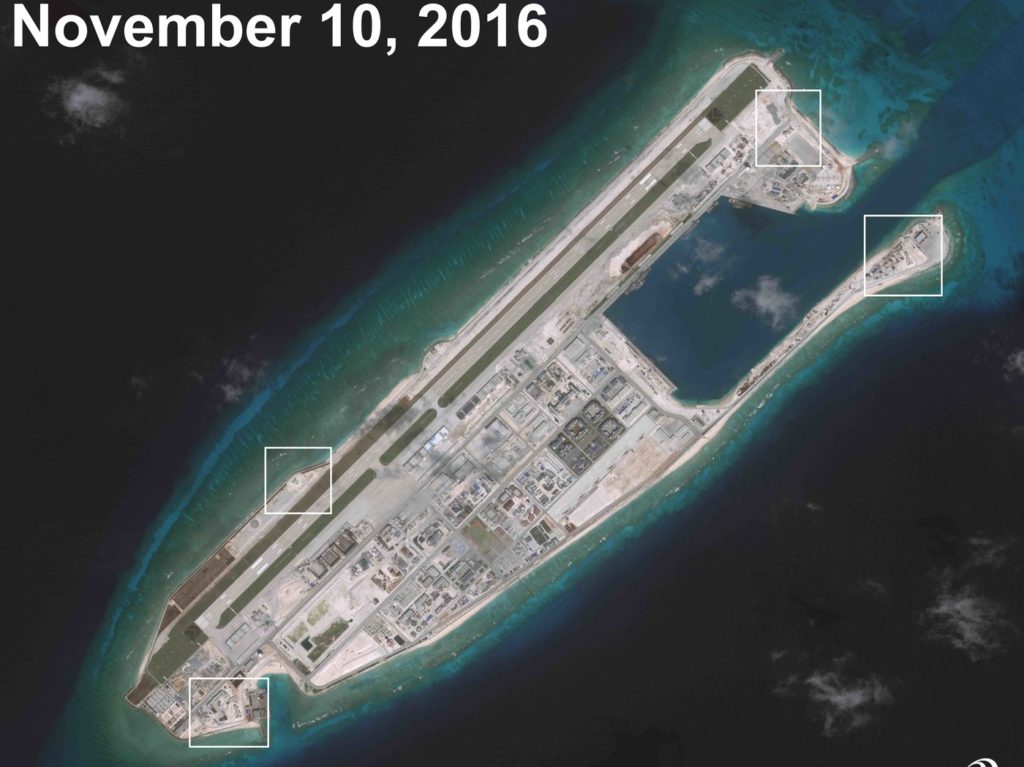China goes more and more into confrontation in the South China Sea, against the United States Navy and neighboring countries.
Now even a small US vessel was kidnapped by the Chinese Navy in international waters near the Philippines.
- The Chinese navy seized a US “unmanned underwater vehicle” (UUV) about 50 miles (80km) northwest of Subic Bay, Philippines, in the South China Sea.
- An American Navy oceanographic survey ship, the USNS Bowditch (picture) was about to retrieve its little research vessel.

- The USNS Bowditch (T-AGS 62) is a Pathfinder class oceanographic survey ship. She is the third ship in the class. USNS Bowditch is a part of a 29 ship Special Mission Ship program and operates in the South China Sea. She is named after mathematician Nathaniel Bowditch. Bowditch was engaged in surveying at Tacloban shortly after typhoon Haiyan in advance of the Navy’s Operation Damayan in an area known for its shifting hazards to navigation using its multi-beam contour mapping system.
- The Chinese navy ship ASR-510, a Dalang III-class ship, approached within 500 yards of the Bowditch, launched a small boat, and seized the UUV.
- The Bowditch made radio contact with the Chinese ship and demanded its return, but were ignored.
- The water-drone, an “ocean glider”, was used to test water salinity and temperature.
- The Pentagon called it ” lawfully conducting a military survey in the waters of the South China Sea” and “it’s a sovereign immune vessel, clearly marked in English not to be removed from the water – that it was US property.”
- It was part of an unclassified programme to map underwater channels.
- The US has issued a formal request to Beijing to deliver it back.
- December 17th the Chinese reacted: “Upon confirming that the device was a US underwater drone, the Chinese side decided to transfer it to the US side in an appropriate manner,” Chinese Defense Ministry spokesman Sr. Col. Yang Yujun said. “China and the United States have been communicating about this process. It is inappropriate — and unhelpful for a resolution — that the US has unilaterally hyped up the issue. We express our regret over that.” The US “has been frequently deploying ships and aircraft to conduct close-in surveillance and military surveys in waters facing China. China firmly opposes such acts and demands the US cease such activities. China will stay alert over relevant US activities and will take necessary measures to counter them.”
- CSIS in Washington DC recently has published satellite images of anti-aircraft missiles on China’s artificial islands in the South China Seas (photos). China has built significant point-defense capabilities. New satellite imagery showing hexagonal gun platforms , an array of anti-aircraft guns, cruise missile defenses, in nearly identical emplacements on islands created on large reefs to serve as outposts in the Spratly Islands.
- In summer an international tribunal in The Hague invalidated China’s claims in the South China Sea. China was taken to court by the Philippines over actions in the South China Sea. The Court ruled against China, saying “man-made islands are not their territory, so no economic control of water around is allowed”. The ruling found that China’s build-up of artificial islands in the region was “also harming natural ecosystems”. China’s leaders rejected that decision. Parts of the South China Sea are also claimed by Taiwan, Malaysia, and Vietnam.

- Before China had mentioned “no intention of militarising the islands”. Now the Chinese Defence Ministry defended “necessary military facilities.”
- President-elect Donald Trump criticized Beijing for a “massive fortress” in the region. He as well questioned the so-called “One China” policy.
China wants to control the South China Sea – against the rules of international law and the rights and interests of neighboring countries and the United States.
Since October 2015 the US have shown a policy of military presence several times against the demands of Beijing, ignoring its claims.




